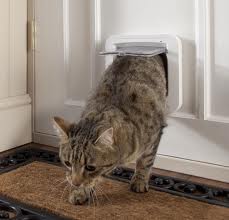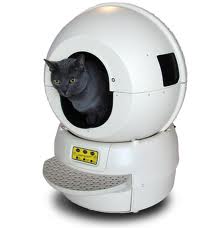Certain civilizations have a massive obsession with some animals. Egyptians were so fond of cats that archaeologists had thought they were the first people to pet feline creatures. But now we know that the cats’ taming began in the Middle East some 10,000 years ago. The people of Egypt treated cats like royalty, believing that these creatures brought good fortune. Rich folks dressed their cats in ornaments and mummified them when the beloved pet died. But you don’t need jewels if you’re planning to adopt a cat in the 21st century. A cat’s needs haven’t changed in these thousands of years. Here’s a brief description of seven essential supplies to get before your pet arrives home.
Necessary Supplies For Your Cat:
When you bring a cat home, make sure to give it some space. The cat won’t immediately adjust to a new environment. You better get the feline newcomer a private room with its stuff (litter box, food bowl, and toys). If you own more pets, remember to separate them from the adopted kitten. Schedule a visit with your veterinarian quickly after the adoption. No need to get offended if the cat doesn’t sleep on your lap. Give the poor animal some time to mingle with you and welcome it with these supplies:
- Cat food:
Discuss the cat’s diet with the shelter home. Since your cat will have to adjust to many changes after adoption, let the food be something it’ll be familiar with at your residence. A cat’s diet depends on its age, so kittens require special meals. Older cats need high levels of protein (i.e., meat). A high-carb meal can lead to your pet, gaining unnecessary weight. How much and how often does your kitty needs to be fed? Your veterinarian can answer this question with more accuracy. Also, prepare food and water bowls for your new friend. Don’t forget to clean these bowls every day. Moreover, cats don’t like owners to put their food and litter next to each other.
- Cat litter:
Litter boxes are available in different styles. You can purchase a self-cleaning one, but these mechanisms often frighten the cats. Hooded boxes provide them with some privacy, but again some cats dislike this hood. The simplest option is to buy cat litter online that comes in a plastic bag if you are too occupied to buy it from a store. This eco-friendly litter attracts cats with its natural smell. Its odor control feature purges your home from traditional stinking debris. Also, it’s easy to dispose of and replace with fresh litter.
- Sleeping bed:
Cats can sleep anywhere, but it’s best to arrange a proper bed for them. Owners should provide a comfortable napping place for their adopted cats. An ideal feline bed is a simple cardboard box because cats feel less vulnerable sleeping inside them. Such containers get enclosed on all sides except for the entrance. You don’t need to immediately purchase a bed; many online tutorials can help you create a makeshift one for the cat. Just search on wikiHow and find related DIY procedures.
- Cat toys:
Exercise is essential for a person’s mental and physical health. Similarly, cats need to play and indulge in physical activities to stimulate their hunting instincts. So, you must obtain a variety of safe toys for your feline buddy. Don’t buy toys with small parts (e.g., a squeaker inside a mouse) as they pose a choking hazard. What sort of toys then you can buy? Well, there are catnip chew toys and a laser your cat can chase around the floor. You can also get some battery-operated toys.
- Scratching post:
We recommend a wand toy and a scratching post as the cat’s significant playmates. Since cats require scratching and rubbing their bodies to spread their hormones, make sure that the scratching post has a strong base so it won’t flip over. Cats scratch for many reasons. Maybe they’re removing their claw’s dead outer layer. Perhaps they’re trying to mark their territory. When cats rub against you, it’s a sign of ownership. A scratching post allows the cat to exercise and stretch its muscles.
- Cat carrier:
And, of course, you need something to carry the adopted animal in when you’re bringing the cat home. Make sure that it’s a comfy carriage with plenty of room and ventilation. It must allow easy entrance to the cat. You might bring your cat to a friend’s house or a veterinarian’s clinic. Ensure that your cat is comfortable with this temporary accommodation and transportation. You can also use a bag or a harness to carry the creature. Cats respond eagerly to harnesses.
- Cat collar:
It’s easy to lose your cat in a busy street. Some 70% of our fellow countrymen are pet owners. Most of them own a dog. But 35% of Americans have a cat, while 9% prefer fish. So, it’s better to have a collar and ID tag for your little feline roommate. The ID tag should have your name, address, and phone number so people can contact you. Get a collar that fits your cat’s neck and doesn’t annoy it or cause breathing issues. Moreover, here’s a list of other stuff you can obtain for the cat:
- First-aid supplies
- Nail clippers
- Non-toxic cleanser
- Toothbrush and toothpaste
- Comb/brush
Conclusion
People have certain notions regarding their pets. Do cats and dogs dislike each other? Yes, they have a natural dislike for each other that is rooted in their predatory instincts. But not all of these notions are true. You may have heard that cats don’t love their owners. But research shows that you’re more than a food source for your kitty-cat. You also provide your feline friend with a sense of comfort and security. Cats are, unlike their canine rivals, just reluctant to show their affection. But it would help if you reciprocated this attachment with a full-on display. Cats are smart animals, and they’ll know when their owner cares about them. Show that you care by obtaining essential supplies for your adopted little darling.






